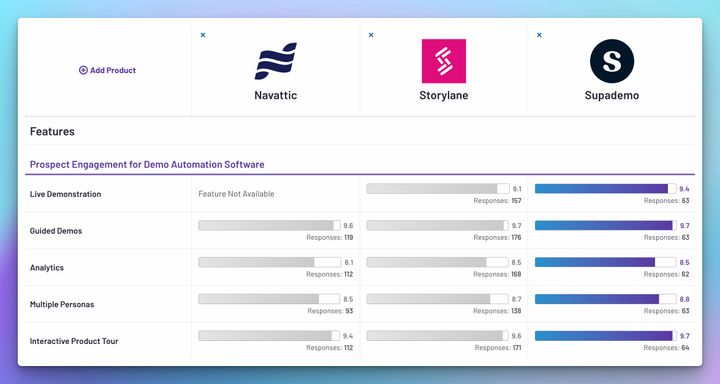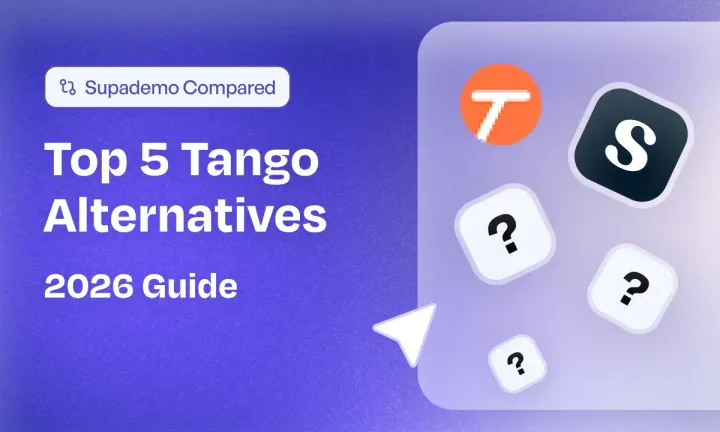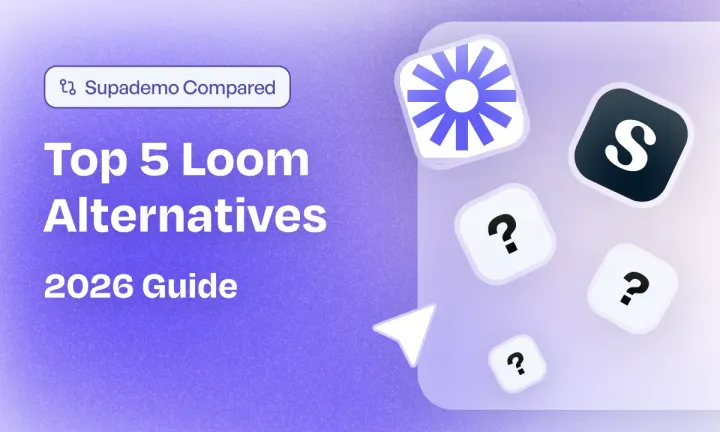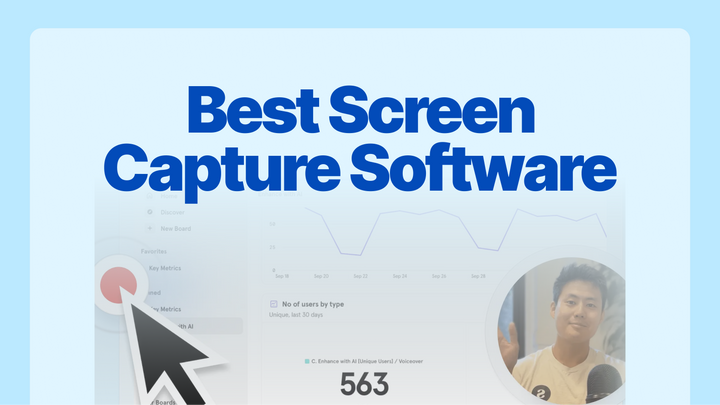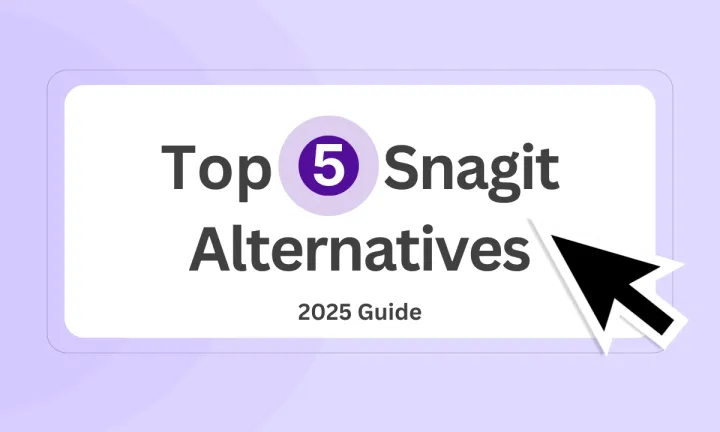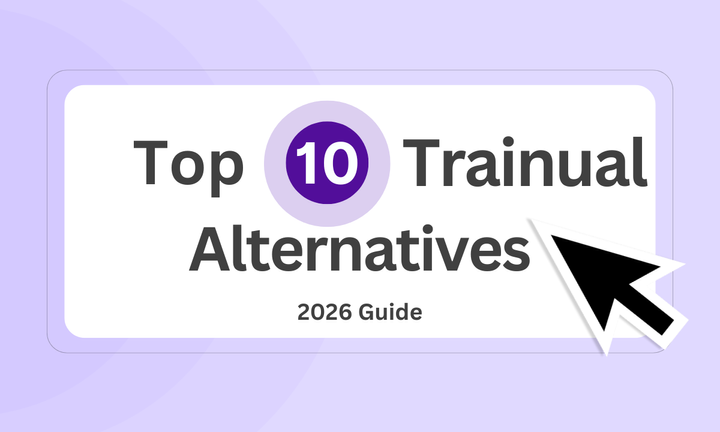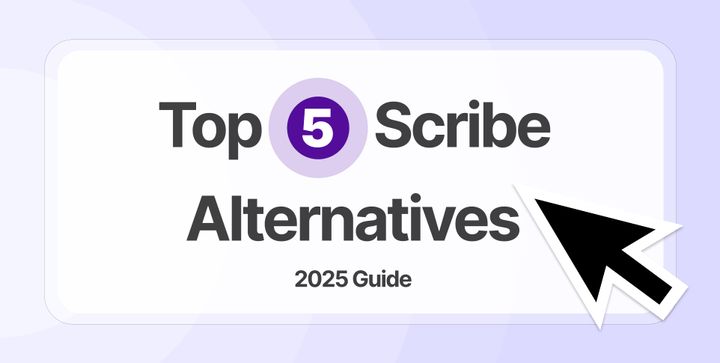If you've landed on this page, you're likely looking for demo automation platform that delivers an engaging and interactive experience for your target audience.
But you're at a crossroads when deciding which software would be the right fit for your business. Over the years, Navattic and Storylane have proven themselves to be solid choices for creating HTML demos. But if you've tried these platforms or read reviews, you may have seen some of these common pain points:
- A clunky, slow user interface
- Difficulty in setting up desired workflows
- A high learning curve and time to create demos
- Steep price to feature ratio
- Confusing interface and navigational menus
Wheter you're new to the demo automation space or you're looking for a better alternative that is devoid of these issues, this guide will guide you through the differences between Navattic, Storylane, and Supademo - three leading demo automation platforms, according to G2.
Here are four unique things only Supademo can do:
⭐️ Build demo for 'almost' every use case: From marketing to internal training demos, we help you build demos for every use case.
⭐️ Scale demos and guides with Generative AI: With AI text, AI voiceovers, and AI translate, you can auto-generate step descriptions, personalize text, add voiceovers, and internationalize demos.
⭐️ Unbeatable feature-to-price ratio: Despite being much more affordable, Supademo offers top-notch features, including demo branching, multi-demo showcases, and email/password gating.
⭐️ Launch demos within minutes: With our no-code, intuitive demo builder, you can launch and embed demos faster than anywhere else.
Feature Comparison: Navattic vs. Storylane vs. Supademo
G2 Comparison: A Sneak-Peek
First, let's explore how G2 reviewers compare and rate Navattic vs. Storylane vs. Supademo. As you can see, whether in pricing or key features, Supademo is a leading contender when comparing against Navattic and Storylane.
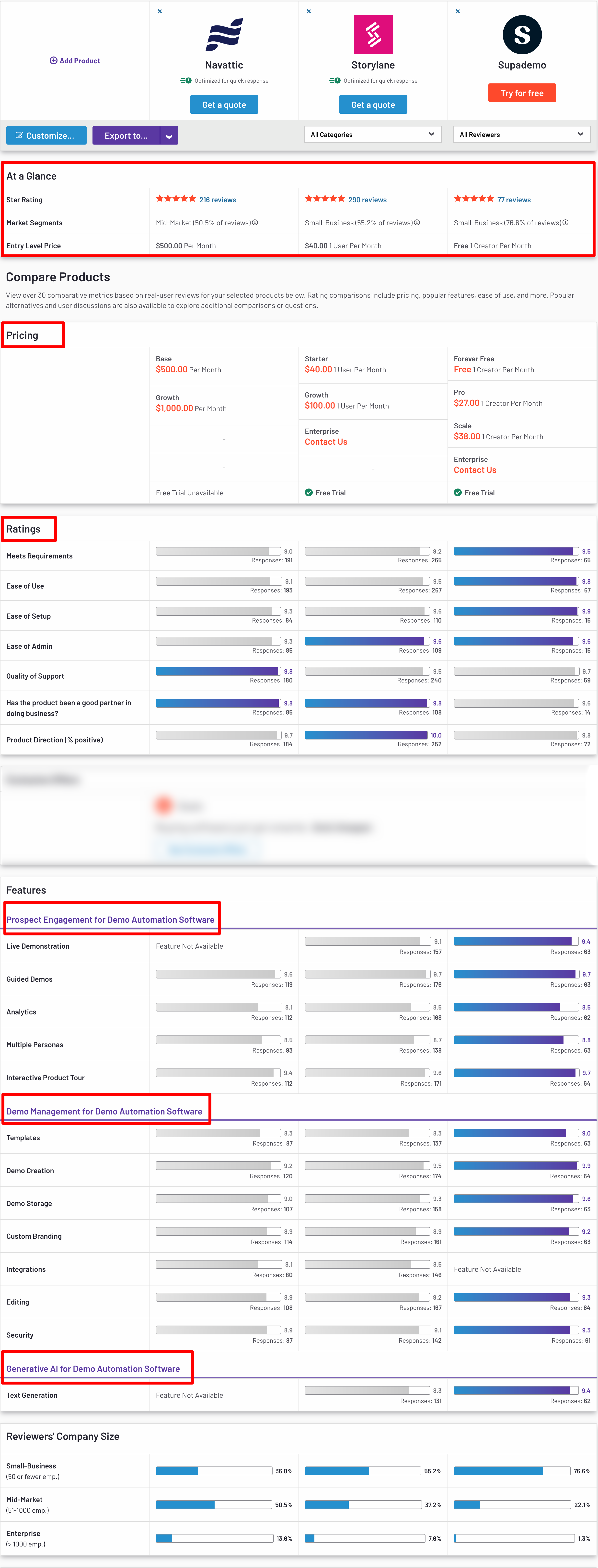
Now, let's explore at how Navattic and Storylane perform against Supademo regarding demo builder, analytics, use cases, and time to implementation.
Interactive Product Demo Builder
Navattic and Storylane help you build HTML-based demos, particularly when you need to show complex product features. Along with HTML, Storylane offers a much easier alternative, i.e., screen capturing through their extension. However, their free plan does not support video-based capture.
Despite being a no-code demo automation editor, both these software have learning curves, with Navattic having a much stepper one – mainly since Navattic is only HTML-focused.
When it comes to unique features, Supademo offers the ability to bundle multiple Supademos into one collection and the ability to use dynamic variables to personalize demos at scale – two options not offered by Navattic or Storylane in the baseline plans.
Ultimately, if you want the fastest and easiest platform when it comes to user experience, Supademo's intuitive demo builder may be the right fit.
✅ Personalize demos easily with dynamic variables and mult-flow branching options
✅ Multi-demo showcase collections for grouping multiple demos into one URL or embed
✅ Faster creation and edit experience with an easy-to-use platform (30s to create a demo)
✅ A generous free plan with 5 published demos vs. 1 demo (Storylane) or none (Navattic)
✅ Mobile demos and better embed support (i.e. support docs, onboarding walkthroughs, guides)
Use Cases
Interactive demos can be used for various cases, from pre-sales demo sharing to embedding links on landing pages. Navattic and Storylane are inclined toward marketing use cases – specifically for interactive product tours.
While supporting marketing use cases, Supademo works effectively to train, onboard new customers, and announce a new product feature, which is more feasible with Supademo. Features like vertical step copy, video exports, and showcase collections lend themselves to this malleability.
I absolutely love Supademo. We use it for so much more than just showcasing use cases on our home page! - Daniela De Almada, Head of Marketing
Analytics
Navattic collects powerful analytics on demo usage and engagement, showing you metrics like unique vs. engaged visitors, CTA click rate, and time spent per session.
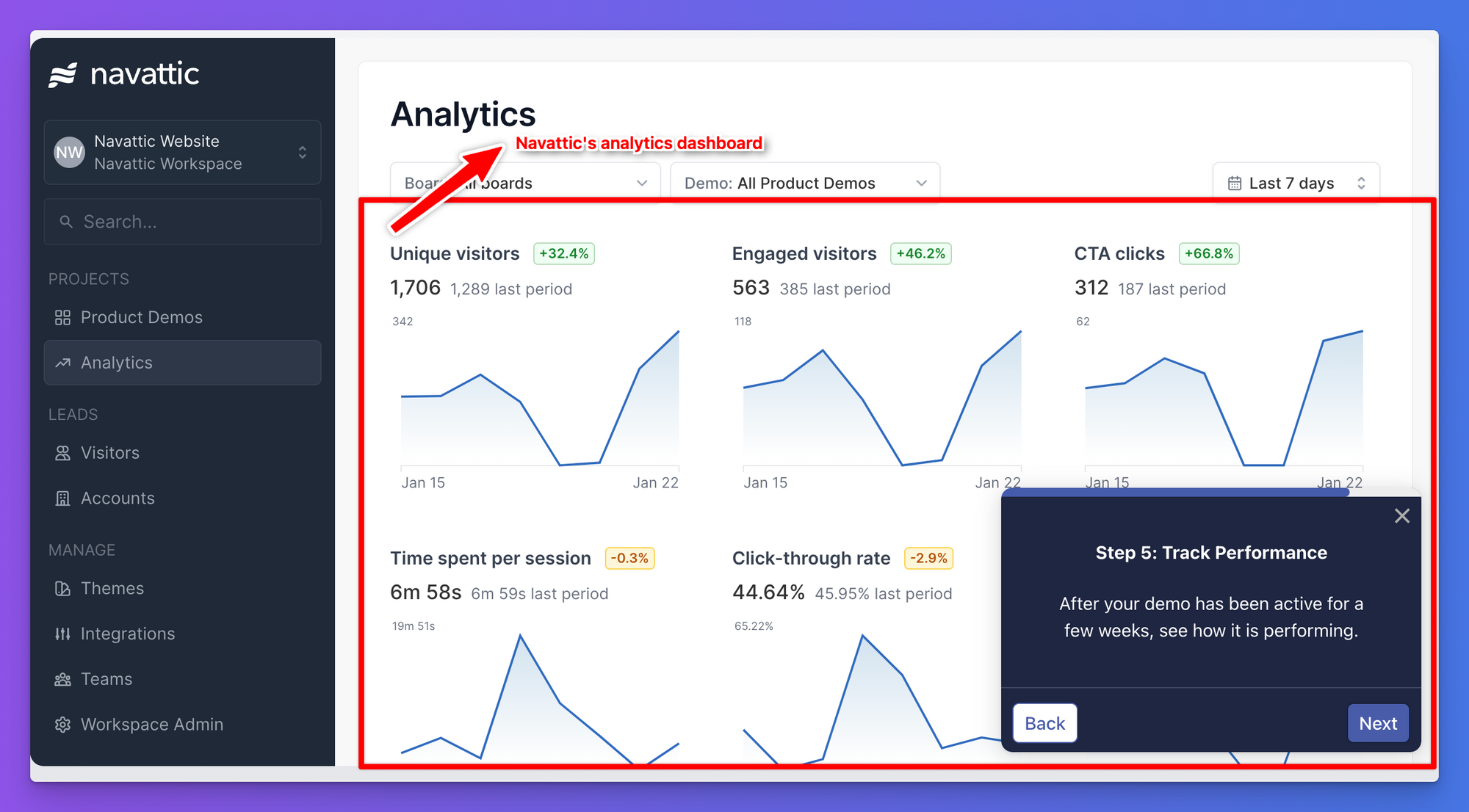
Storylane's analytics dashboard gives insights into all the demos created to date, individual demos, or sessions. You get textual and visual representations for each category, such as line graphs.
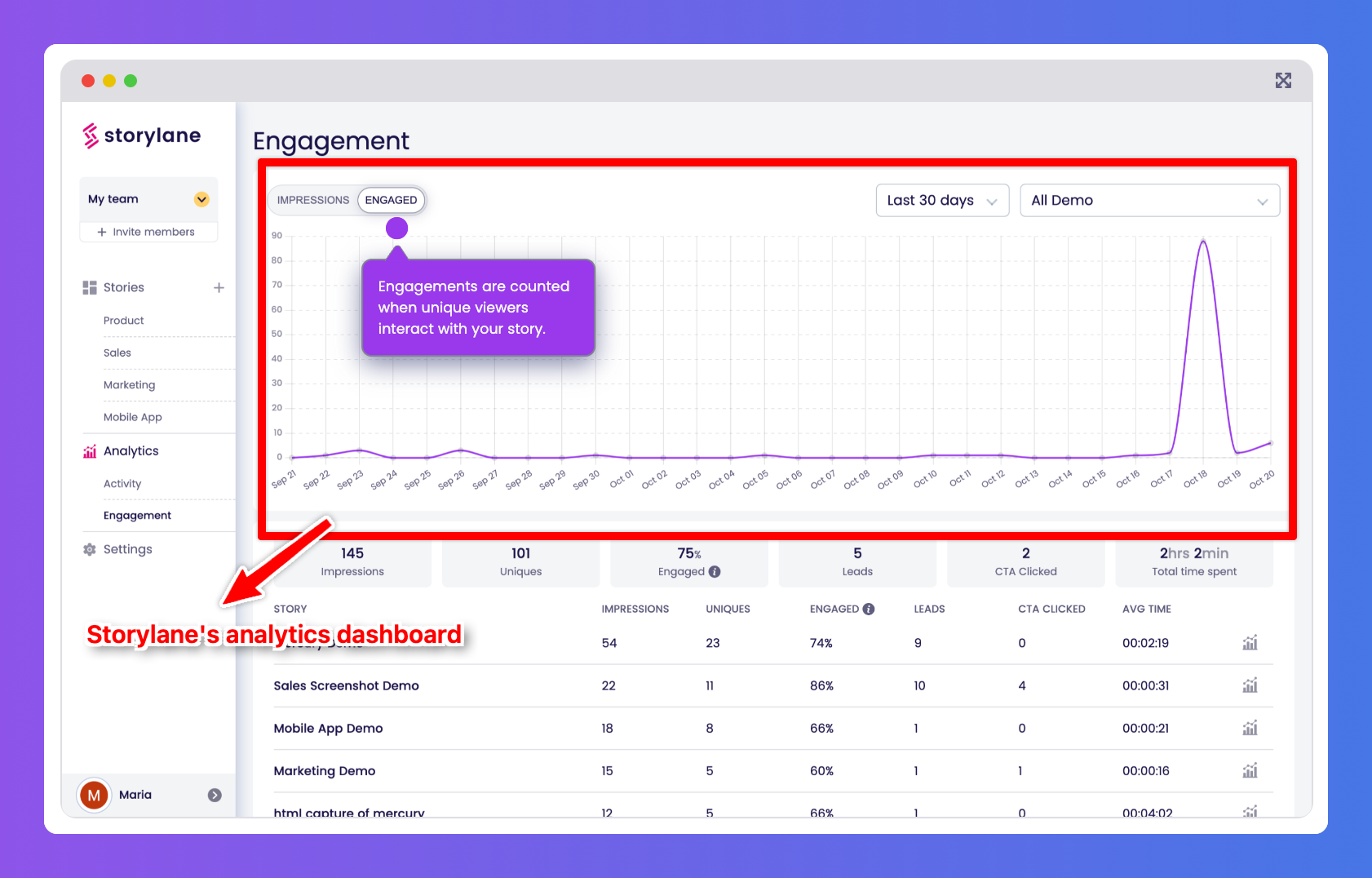
Supademo also offers helpful and actionable insights in a bar graph format, showing the progression of user engagement and interaction until the last step. Try Supademo analytics through this interactive demo.
Pricing
Navattic is the most expensive for the features offered. Their pricing starts at $500/month, and features include unlimited demos with 100 user access.
Storylane offers comparable base pricing to Suapdemo, starting at $40/month (vs. Supademo's $27/month). To access HTML-recording or personalization, Storylane users need to fork over an additional $500/month. In contrast, Supademo customers can access personalization at a much more affordable price of $38/month.
✅ Advanced features starting at $27/per month per creator (AI assistant included);
✅ An un-gated 14-day free trial without a credit card;
✅ A generous free plan with five published demos included;
✅ An advanced Scale plan (starting at $32/month) provides access to features like demo gating and conditional branching.
Further reading: Top 6 Interactive Product Demo Use Cases You Need to Know
Quick Glance: Navattic vs. Storylane vs. Supademo
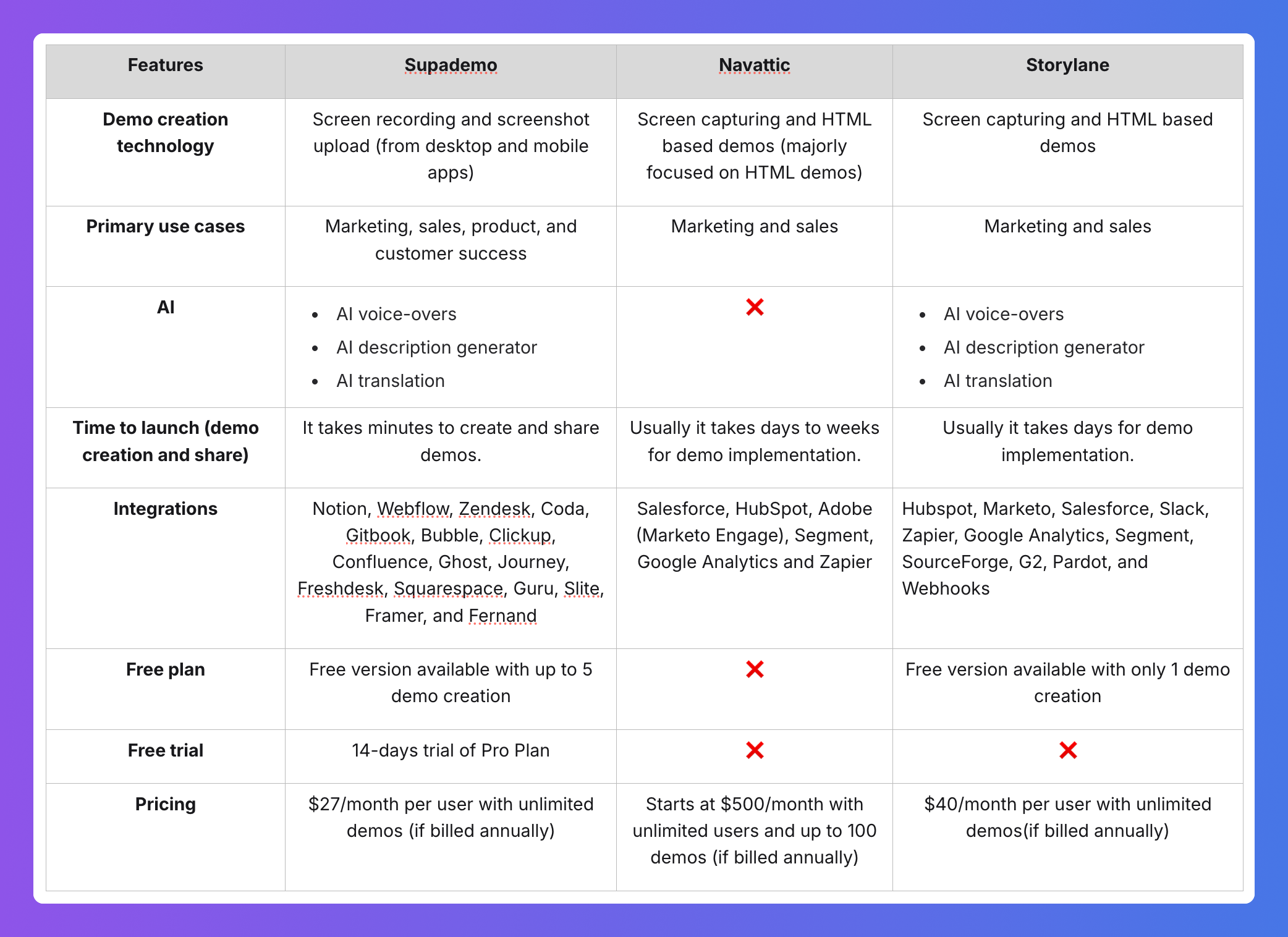
Which Interactive Demo Software is Best for You?
Most comparisons will leave it up to the reader to determine the right solution.
We won't do that here. Our aim is to help you find the right demo software that best aligns with your needs and preferences. So, keeping our promise, here's a brief checklist of when each of these demo tools should be your go-to choice:
Navattic is a good fit if
- you have a narrow use case in marketing and only need a handful of demos
- you are comfortable creating HTML demos
- you're an enterprise org
- you have a large budget to experiment if interactive demos are a fit for your use case
Navattic isn't a good fit if
- you want a free trial or start with a free plan before you buy
- you want a more leisurely, user-friendly tool that anyone on your team can use with no learning curve
- you want to create many demos for multiple use cases, including for customer success, onboarding or internal training
- you want a good team collaboration feature (e.g., getting feedback on demos via comments)
Further reading: Explore 7 noteworthy Navattic alternatives
Storylane is a good fit if
- your primary demo use case is for the marketing and sales team
- you want to add videos-based guides to your interactive demos
- you want to create both screenshot and HTML demos
Storylane is not a good fit if
- you want the ability to bundle and share self-guided demos for customer success or onboarding
- you want the easiest and most intuitive demo creation experience
- you want to create demos for multiple use cases across various departments with faster time to implementation
Further reading: Explore 7 noteworthy Storylane alternatives
When Should You Choose Supademo?
If you want user-friendly and affordable software that helps you create interactive demos at scale, Supademo is the top choice. Here are four more fundamental reasons to choose Supademo:
#1: If you want the best bang for your buck
Supademo is among the most affordable demo software on the market. The pricing plans start at only $27/month per creator and include unlimited demo creation, AI assistance, and demo showcases.
The Scale plan, starting at $38/month per creator, is reasonably priced compared to Navattic and Storylane. On a Scale plan, you get gate access to your demos to grow your lead generation numbers.
#2: If you want a fast, user-friendly tool
According to G2, Supademo is one of the most user-friendly demo software in the market. Supademo is tied for the top spot with a 9.3 usability score, tying up with Storylane but surpassing Navattic (#10).
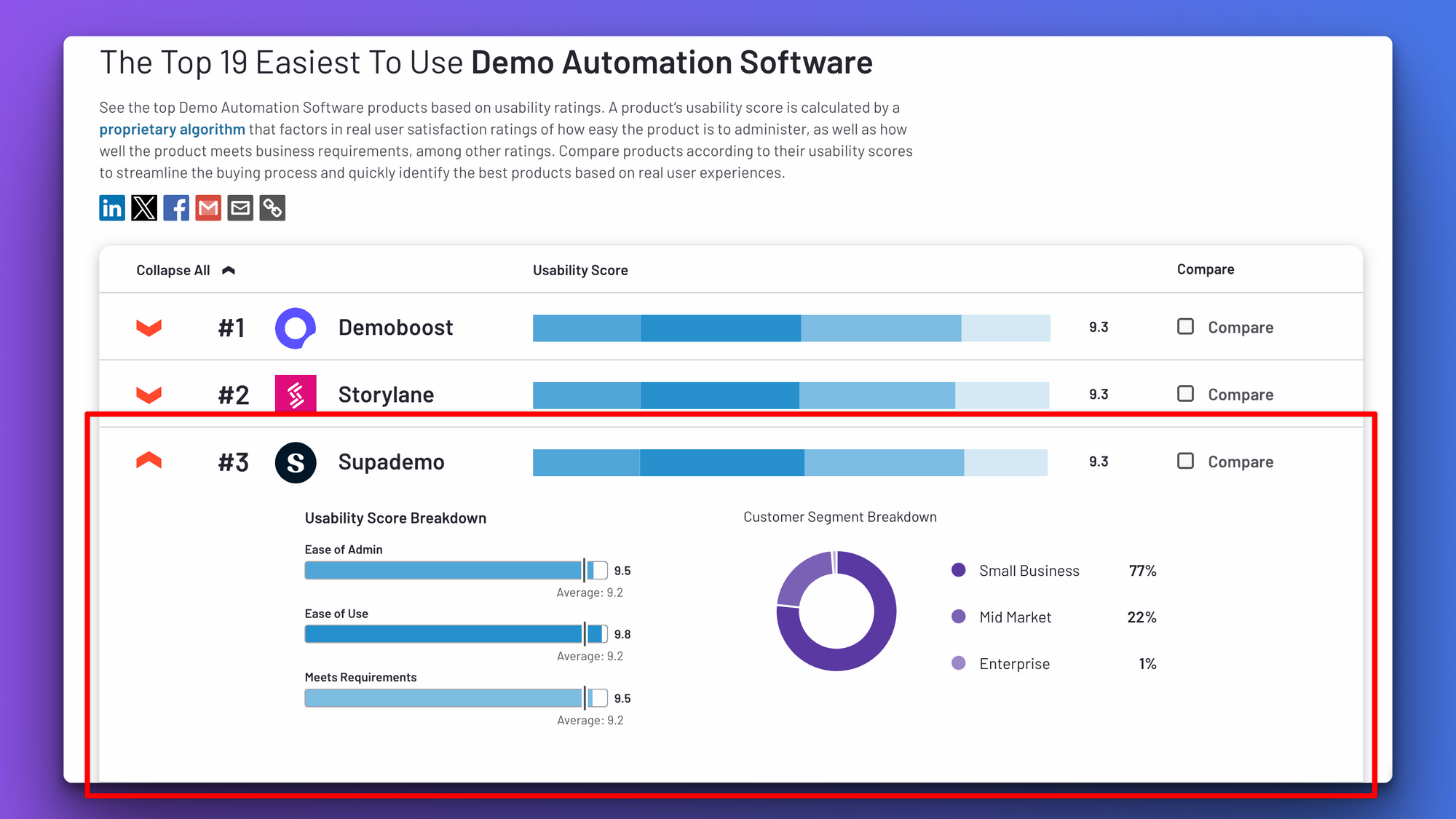
Here's how Supademo makes demo creation and sharing a breeze:
- Free Chrome extension to screen record/capture
- Add, edit, or replace hotspots and screens through an easy-to-use editor.
- Upload screenshots or pictures from desktop or mobile apps to build demos.
Supademo was extremely easy to trial and adopt, intuitive/user-friendly, and a great tool for members across the entire team. For instance, we use it for marketing, support, and content - not just for app tours. The fact that it’s embedded and used across our entire workflow has been beneficial. - Juan - Founder and CEO of Porter Metrics
#3: If you want to build a demo for multiple use cases
Supademo is the leading demo automation platform for supporting multiple interactive demo use cases across the organization. If you wish to embed demos in your help docs, drive sign-ups during pre-sales, or promote new product features, Supademo's suits marketing, sales, and customer success teams.
Do you want to share training guides and documents internally? Supademo helps you build these demos as well with ease.
#4: Gen AI to ease your workload
Last but not least, Supademo offers an AI assistant to help speed up and scale your demo creation and distribution. This includes the ability to:
- Translate your product demos in 15+ languages
- Add synthetic voiceovers to illustrate steps for your users verbally
- Generate hotspot text based on your click paths and prompts
But don't just take our word for it. Over 10,000 customers across 80+ countries leverage Supademo to accelerate deals, drive customer success, and push time-to-value.

Wrapping it up
If you have a considerable budget to allocate and technical know-how to build HTML-based interactive demos, Navattic or Storylane is a good option.
But if your focus is on speed, ease-of-use, and malleable use cases, Supademo may be a better fit. Budget constraints, time-to-launch, or technical complexity are additional barriers that are easier to overcome with Supademo.
Ready to create your first interactive demo? Get started here!
FAQs
Does Navattic offer a free trial?
Navattic doesn't offer any free trial or free plan. Their pricing starts from $500/month with a 100-user limit and unlimited demo creation.
How many demos can I create using Supademo’s free account?
On Supademo's free account, you can create up to 5 interactive demos. You'll also have access to our editing dashboard to customize demos to your target audience.
Is Supademo a good Navattic alternative for marketing?
Supademo is flexible for teams in pre-sales, product marketing, or customer support. This flexibility allows members across the team to leverage Supademo, making it a great Navattic alternative for product marketing teams.
Is Supademo the best Storylane alternative for pre-sales?
Yes! Pre-sales teams can use Supademo to replace manual screenshot markups, endless video editing, or time-consuming interactive demo creation. With automatic text annotations and simple customizations, anyone can create and share an interactive product demo with Supademo in 5 minutes.
Which demo software is best for multiple use cases across different teams?
Supademo is a great contender for creating interactive demos for multiple use cases. Whether you want to launch a product feature, share an onboarding kit with new customers, embed in help docs, or share the product's feature with high-quality leads, Supademo helps you build all types of demos (in minutes with screen capture and no-code demo editor).
What are the key differences of Navattic vs Storylane?
While similar in end functionality and features, here are the main differences of Navattic vs. Storylane:
- Pricing: Navattic has a higher starting price but offers unlimited user seats on every plan. Storylane has a lower entry point for screenshot demos, but bills per seat.
- Features: Navattic focuses on deeper technical features like HTML, while Storylane focuses more on broader features.
- Implementation: Both are considered fast to implement, with Storylane having a slight edge according to G2 reviews.
What are the key differences of Navattic vs Tourial?
While similar in end functionality and features, here are the main differences of Navattic vs. Tourial:
- Ranking: According to G2, Navattic is ranked 4th in Interactive Product Demos, while Tourial is ranked 11th in Interactive Product Demos.
- Functionality: Navattic focuses on deeper technical features like HTML, while Tourial focuses more on broader features and simple screen capture.
- Scalability: Tourial positions itself as an alternative for teams that have outgrown Navattic.
What are the key differences of Navattic vs Reprise?
Here are the main differences of Navattic vs. Reprise:
- Pricing: Navattic's pricing is generally cheaper than Reprise, with their plans starting at $500/month, while Reprise advertises
- Functionality: Navattic focuses on deeper technical features like HTML, while Tourial focuses more on broader features and simple screen capture.
- Scalability: Tourial positions itself as an alternative for teams that have outgrown Navattic.
What are the key differences of Navattic vs Walnut.io?
Here are the main differences of Navattic vs. Walnut.io:
- User Experience: Walnut.io offers a wide range of editing options but is considered slightly more complex, scoring 4.5 stars in G2 reviews. Navattic is perceived as more user-friendly with a 4.8-star client rating on G2.
- Use Case: Navattic is more focused on marketing use cases, particularly for creating product tours and interactive demos. Walnut.io caters more to sales teams, enabling them to create captivating demos for sales purposes.
- Pricing: Navattic's pricing starts at $6,000/year with unlimited user seats. Walnut.io's pricing starts at a much higher figure, though they don't disclose this on their website.
What are the key differences of Navattic vs Testbox?
Here are the main differences of Navattic vs. Testbox:
- Use Cases: Testbox is best suited for sales and solutions teams. It allows Account Executives (AEs) and Solutions Engineers (SEs) to create custom demo environments, trials, and Proofs of Concept (POCs) instantly. Navattic primarily focuses on marketing teams looking to create high-level product tours and interactive demos.
- Demo Environment: Navattic uses HTML capture to create interactive demos by capturing the front-end code of the product. TestBox works on top of a live instance of the product, creating fully functional demo environments that include the latest features and UI.
- Scalability: TestBox is built for larger sales-led organizations, providing scalable solutions for creating on-demand, personalized demo environments and POCs for every lead.
What are the key differences of Navattic vs Supademo?
Supademo is a feature-packed yet more affordable Navattic competitor. Here are some of the core differences:
- Pricing: Navattic's pricing starts at $500/month (annual plan) while Supademo's pricing starts at $27/month (annual plan).
- Free Trial: Navattic does not offer a free trial or free plan, whereas Supademo offers both without a credit card.
- Primary Use Cases: Navattic focuses primarily on marketing use cases, while Supademo focuses on a broad spectrum including sales, customer success, onboarding, and marketing.
- Features: Supademo offers a wider set of features including dynamic variables, conditional branching, AI voiceovers,
- Usability: With the top usability score on G2, Supademo has a more intuitive and faster demo creation process. Navattic is reported to have a steeper learning curve, especially for non-technical users.


